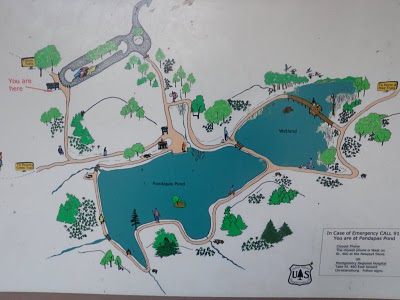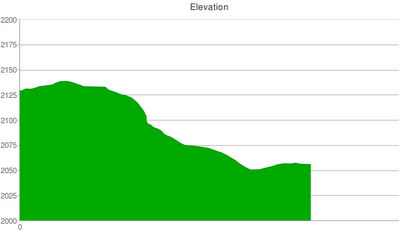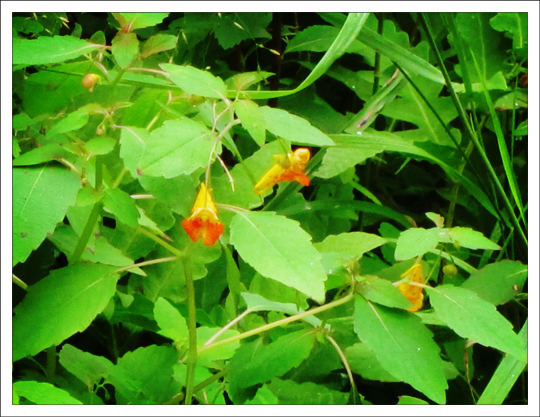Virginia Pine
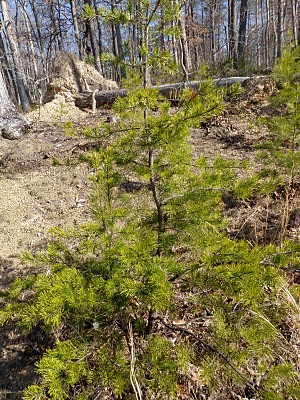 |
| Photo of a young Virginia Pine (Photo Credit: twoknobbytires) |
Table Mountain Pine
 |
| Photo of two Table Mountain Pine Cones; cone on the left has been exposed to extreme heat and cone on right is still sealed (Photo Credit: twoknobbytires) |
Our next pine species is a rather interesting one; the table mountain pine can be identified by its unique grenade-shaped cones that feature spikes that will pierce your hand if you squeeze them too hard. These cones are serotinous, meaning they are sealed shut and only open to reveal their seeds upon exposure to extreme heat, aka fire or prolonged direct sunlight. Pandapas pond is managed to prevent wildfires, so table mountain pine is not an ideal species for this location, but nevertheless, it persists.
Broom Sage Grass
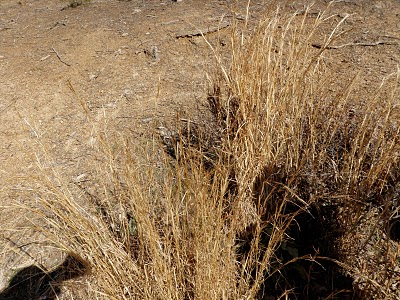 |
| Photo of Broom Sage Grass at Pandapas Pond (Photo Credit: twoknobbytires) |
This species of grass is a Virginia native that has some important vitality traits; it grows in areas where many herbivores reside, but it is not very palatable for these critters, so it persists rather intently. This is a good thing because it grows in clumps that provides shelter for small animals hiding from predators. Also, since the broom sage grass is not invasive, it does not inhibit other plants from thriving around it, promoting much-needed diversity.
Spotted Touch-Me-Not
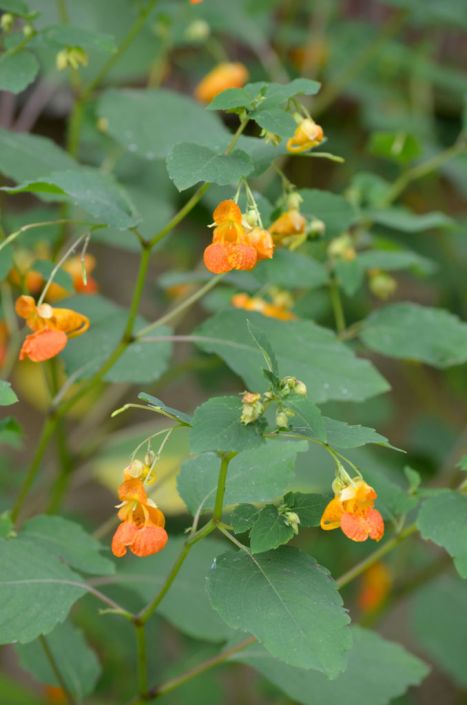 |
| Photo of Spotted Touch-Me-Not at Pandapa's Pond (Photo Credit: Virginia Wildflowers) |
This pretty little flower serves much purpose other than just sprucing up the pond with a little bit of color; its medicinal properties are fantastic. Also known as Jewelweed, this plant is recognized by its delicate orange flowers with maroon speckles whose pods pop open upon being touched, dispersing the seeds up to a foot away (hint, the touch-me-not part). These plants typically grow nearby poison ivy plants, which is fortunate for you if you are allergic, as they are known to help prevent and heal the blisters. Crushed leaves and stalks will secrete a juice that is excellent for application on poison ivy rashes. This plant also contains a compound called "lawsone" in its leaves, which has been proven to have anti-histamine and anti-inflammatory properties.
Heal-All (Self-Heal)
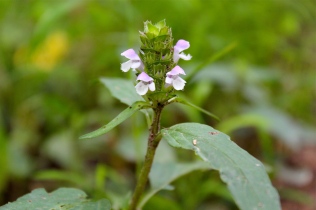 |
| Photo of Heal-All around Pandapas Pond (Photo Credit: Virginia Wildflowers) |
As the name would suggest, Heal-All has been used to treat all sorts of ailments over time. Although this plant is not native to America, it is now found all across North America, blooming June through August. This little flower is best identified by its opened purple flowers and its curled-down, deep green leaves, and its square stem will tell you that its a member of the mint family. The traditional homeopathic properties of this plant are practically endless; it has been used to mend sore throats, mashed into a paste for skin wounds, and is even edible in salads, soups, and stews.
English Ivy
 |
| Photo of English Ivy encroaching up tree (Photo Credit: Heather Rhoades) |
English Ivy doesn't have much positivity to add to the forest, unfortunately. Directly from the name, English Ivy originates from England and was brought here during colonization. This plant is extremely invasive with an innate ability to climb thick and quick. English Ivy is known for its beautiful dark green hues that some may find very aesthetic on the sides of old buildings, but on trees, it's a different story. The thick coverage will damage the bark, weaken tree branches, and even prevent light from penetrating the leaves. Invasive plant species removal projects occur typically once a year throughout Pandapas Pond. Stay tuned to our Facebook for the dates of events like these!
References:
Pandapas Pond -- Field Guide for a Nature Hike -- Blacksburg, Virginia. (2010, April 21). Retrieved November 20, 2017, from https://blog.twoknobbytires.com/2010/04/21/pandapas-pond-field-guide-for-nature/
Rhoades, H. (n.d.). How to Kill English Ivy. Retrieved November 19 , 2017, from https://www.gardeningknowhow.com/ornamental/groundcover/english-ivy/kill-english-ivy.htm
Spotted Touch-Me-Not. (n.d.). Retrieved November 19, 2017, from https://www.prairiemoon.com/impatiens-capensis-spotted-touch-me-not-prairie-moon-nursery.html
Virginia Wildflowers. (n.d.). Retrieved November 20, 2017, from https://virginiawildflowers.org/tag/pandapas-pond/
References:
Pandapas Pond -- Field Guide for a Nature Hike -- Blacksburg, Virginia. (2010, April 21). Retrieved November 20, 2017, from https://blog.twoknobbytires.com/2010/04/21/pandapas-pond-field-guide-for-nature/
Rhoades, H. (n.d.). How to Kill English Ivy. Retrieved November 19 , 2017, from https://www.gardeningknowhow.com/ornamental/groundcover/english-ivy/kill-english-ivy.htm
Spotted Touch-Me-Not. (n.d.). Retrieved November 19, 2017, from https://www.prairiemoon.com/impatiens-capensis-spotted-touch-me-not-prairie-moon-nursery.html
Virginia Wildflowers. (n.d.). Retrieved November 20, 2017, from https://virginiawildflowers.org/tag/pandapas-pond/
